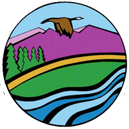
Coös County covers the top fifth of New Hampshire, sharing a 71-mile straight border with Maine to the east, an 85-mile border with Vermont to the west, and a 58-mile border with Canada to the North. There are two New Hampshire Counties that border the south; Grafton and Carroll.
The White Mountain National Forest and Nash Stream State Forest cover a sizable portion of the county. Established in 1803, when it was separated from Grafton County.
Today, Coös County is over 200 years old and many of its people still have the sense of purpose and strength of character of the early explorers to this pathless wilderness area that was home to Abenaki tribes, trees and wild animals. The people who built our North Country society were hardy and courageous. Coös is an Indian word for “dwellers in the pine tree place”.
Education
Assisting in the training and education of citizens and land owners in Forest Management and Agricultural best practices through events, workshops and classes.

Rental Programs
Available for rent to all qualified farming locations in the region. A variety of tools and machinery to assist with the difficult work of getting your fields ready.

Services
Working with local organizations and state agencies, Coos County Conservation District assist with erosion control, waterway management and maintenance.








